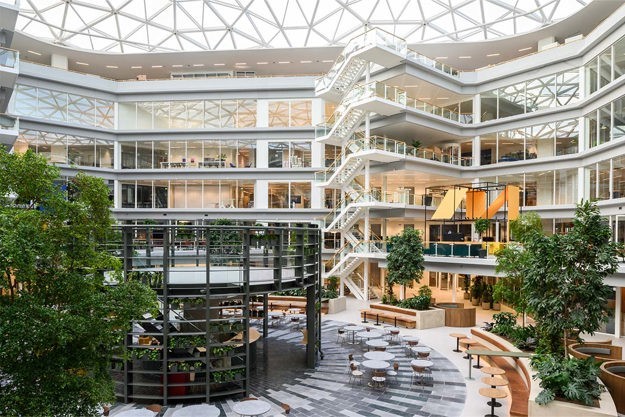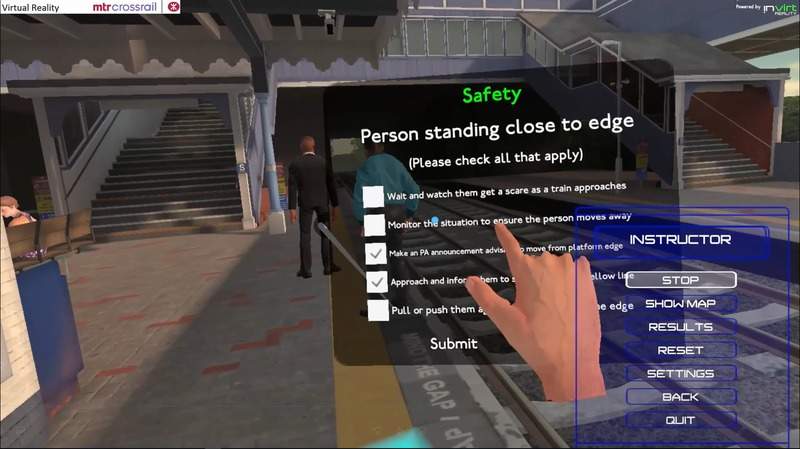Virtual Reality (VR) has transcended its early gaming boundaries to become a formidable tool across various industries, with particularly profound implications in construction. This technology allows for immersive visualisation, enabling stakeholders to step into a computer-generated 3D environment that mimics real-world or planned projects. This article explores the integration of VR within the construction sector, highlighting its role in enhancing stakeholder engagement, streamlining QAQC processes, and vividly demonstrating design intent.
The Technology Behind Virtual Reality in Construction
Hardware
The foundation of virtual reality technology lies in its hardware. This includes headsets like the Oculus Rift, HTC Vive, and more recently, sophisticated mixed-reality devices like the Microsoft HoloLens. These headsets are equipped with high-resolution screens and motion sensors to create immersive 3D environments. Controllers and tracking systems are integral, allowing users to interact naturally with the virtual environment. For construction, this means being able to walk through a building that hasn’t been built yet or to inspect a detailed digital twin of an ongoing project from miles away.
Software
Virtual reality software platforms such as Unity or Unreal Engine are used to create the interactive experiences typical of modern VR. These platforms support the integration of spatial computing solutions, which enable the VR system to understand and simulate the physical space around them. Software in the construction industry is increasingly sophisticated, incorporating AI for business intelligence to optimise the planning and execution phases of projects. These programs can simulate complex data from digital twin technology, providing a virtual yet realistic representation of how a building will both look and function.
Integration with AI and Digital Twin Technology
AI predictive analytics are crucial for interpreting the vast amounts of data generated by VR simulations. In construction, AI can predict potential structural faults, recommend material choices, and optimise building layouts based on environmental data and usage patterns. Digital twin technology in VR creates a bridge between the virtual and real worlds. It enables the virtual model to update continuously in response to changes in the physical model, providing a real-time, accurate basis for decision-making.
Applications in Construction
Stakeholder Engagement
Virtual reality changes how stakeholders interact with project proposals. Instead of static images or models, investors, regulators, and community members can don immersive headsets to explore a proposed development as if they were really there. This can be a game-changer for public consultations and planning approvals, as it allows non-experts to visualise and understand complex projects with ease.
The QA/QC Processes
For quality assurance and quality control, VR coupled with digital twin technology allows project managers to overlay the virtual plan over the actual construction work. They can identify mismatches or errors early by comparing the digital twin with the current state of the building project. This application not only helps in maintaining the quality and integrity of the building process but also saves time and resources by catching errors before they become costly.
Demonstrating Design Intent
VR is an exceptional tool for demonstrating design intent, allowing architects and designers to convey their visions effectively. Changes to designs can be made in real-time during client meetings, showing alternatives quickly and improving the decision-making process. This immediate responsiveness can lead to faster approvals and greater satisfaction with the final project.
Case Studies
The Edge, Amsterdam

The Edge in Amsterdam, known as one of the greenest buildings in the world, utilised VR to engage stakeholders and demonstrate its advanced energy-saving technologies during the design phase. This early integration of stakeholder feedback helped shape a building that not only meets sustainability standards but also offers a high degree of occupant comfort and technological innovation.
Crossrail, London

London’s Crossrail project employed VR to enhance its QAQC processes. The project’s complex underground structure was visualised using VR. This allowed engineers to simulate construction phases and identify potential issues before they occurred. This created a significant reduction in risks and avoiding costly delays.
Technological Impact
Digital Transformation Consultancy
Consultancies specialising in digital transformation leverage VR. They can provide compelling demonstrations of proposed technologies and their potential impacts on a project. This facilitates more informed decision-making and strategic planning.
Process Visualisation Tools
VR acts as a powerful process visualisation tool, providing a dynamic view of the entire construction lifecycle. This helps in planning and executing construction projects more effectively, with constant updates and insights driven by real-time data.
Future Directions
AI Predictive Analytics
The future of VR in construction looks to integrate more deeply with AI predictive analytics. This enhances the ability to foresee potential issues and automate processes within the construction industry.
Interactive Sales Tools
VR continues to revolutionise sales processes in construction. The technology provides interactive, customisable tours of projects, enhancing buyer engagement and accelerating sales cycles.
Conclusion
Virtual Reality is reshaping the construction industry, enhancing how project presentations, analyses, and execution. Its integration with digital twin technology and AI continues to push the boundaries. Companies are looking at what is possible in construction management, stakeholder engagement, and operational efficiency.
References
- Brown, A., 2022. The Evolution of VR Technologies in Construction. Available at: https://www.techtarget.com/whatis/definition/virtual-reality [Accessed 10 April 2024].
- Salin, J., 2021. VR on the Construction Site: Beyond Visualization. Available at: https://www.linkedin.com/pulse/vr-construction-site-janne-salin [Accessed 10 April 2024].
- Thompson, C., 2023. How Virtual Reality is Changing Construction. Business.com. Available at: https://www.business.com/articles/how-virtual-reality-is-changing-construction/ [Accessed 10 April 2024].
- Lee, M., 2024. Virtual Reality in Construction: Tools and Applications. MetaMandrill. Available at: https://metamandrill.com/virtual-reality-construction/ [Accessed 10 April 2024].
- Kapoor, S., 2022. Innovating Construction: VR and Digital Twin Tech. ConsultLeopard. Available at: https://consultleopard.com/virtual-reality-in-construction/ [Accessed 10 April 2024].

